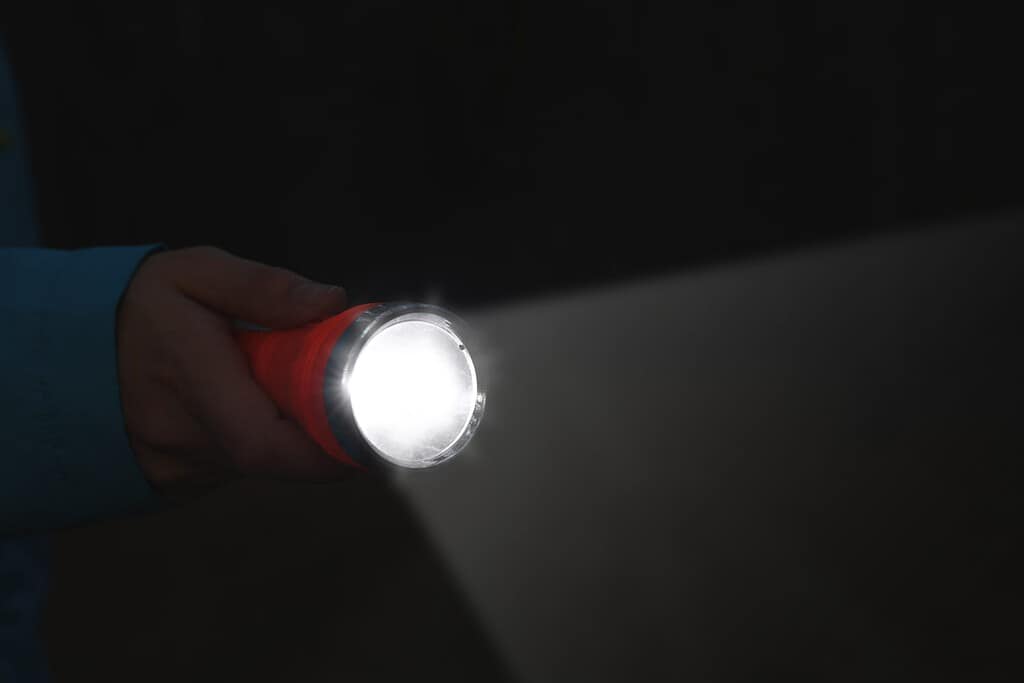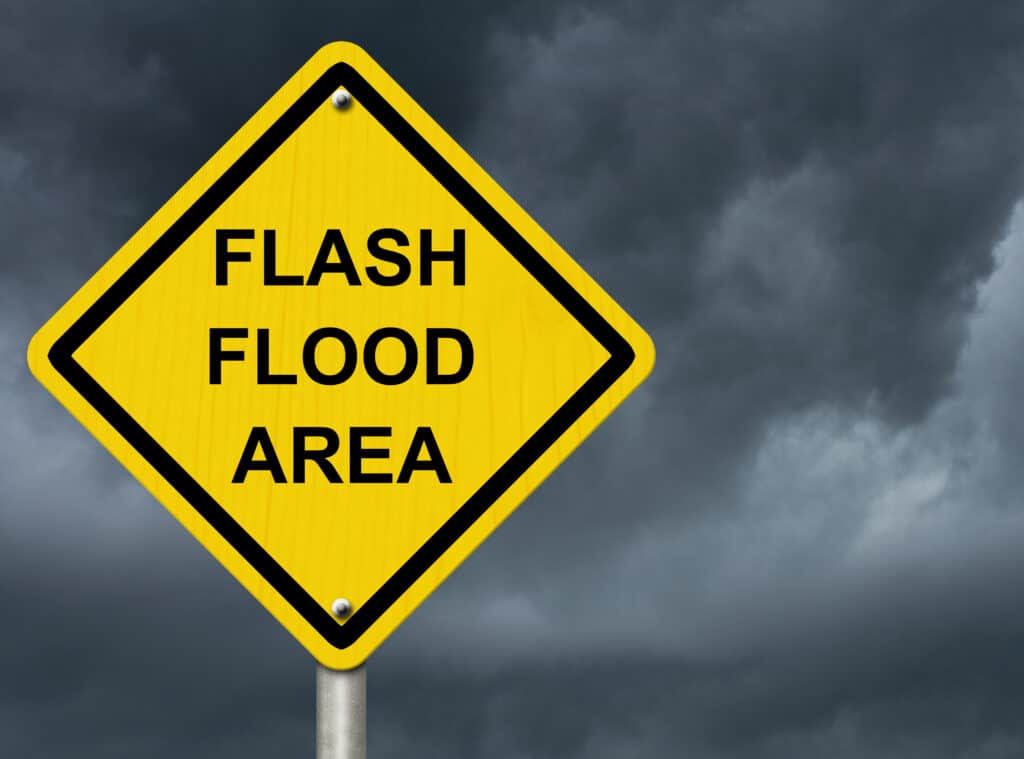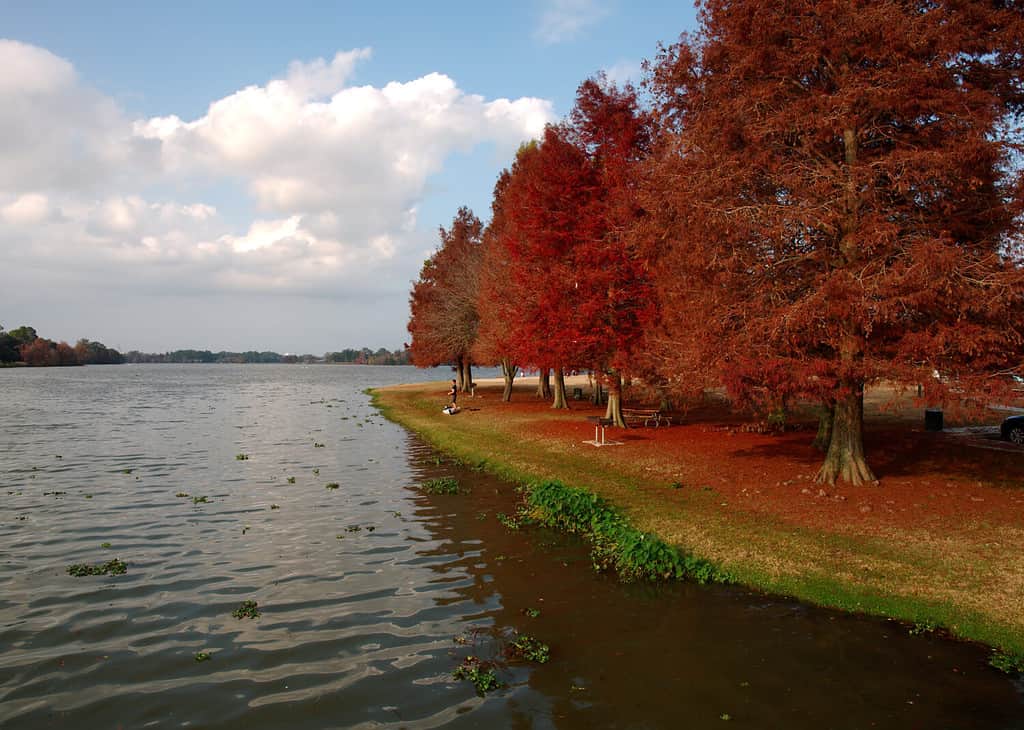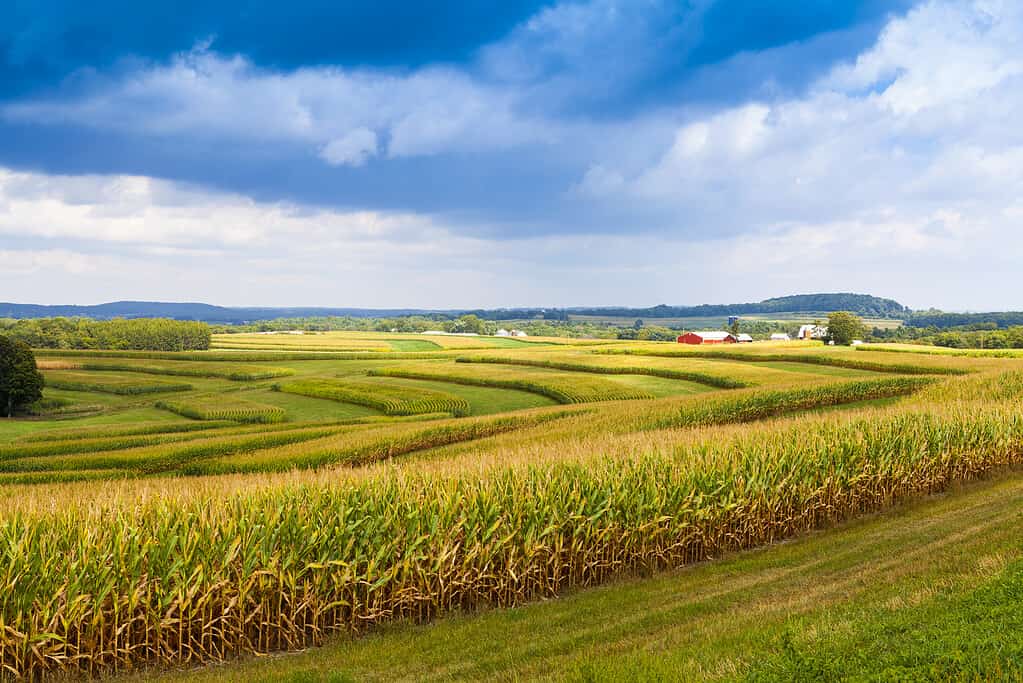The colors that represent fear may surprise you, as they may also make you think of other strong emotions. Fear is something each and every one of us feels. That’s why we might associate many different shades and hues with it. But which colors make us think of fear the most, and where can we find these colors in nature to test our true opinion surrounding such a powerful feeling?
Today, we’ll go over five distinct colors most often tied to the undeniable feeling of fear and why they are often associated with fear. Then, we’ll address where you might view these colors in nature. Don’t be afraid – let’s learn about color psychology and theory now!
Which Colors Represent Fear?

Fear is represented by many colors, including black, red, and gray.
©iStock.com/cokacoka
With many different associations and connotations, five colors represent fear: black, purple, gray, yellow, and red. Some of these colors connect to caution, while others symbolize how fearful we might feel when we look at them. Ultimately, the colors that represent fear also represent the unknown and other anxious feelings.
According to a study performed by the University of Massachusetts Dartmouth, many participants claim there is no singular color that represents fear. However, these five colors stand out as potential triggers. Let’s discuss why this might be the case.
1. Black

Black is the color most often connected to fear.
©New Africa/Shutterstock.com
Color theory suggests that black represents authority as well as anxiety in equal measure. It’s natural to associate this color with fear because of its cavernous, empty qualities. While black’s meaning can vary by person, shadows, and darkness are two things often connected to fear.
2. Red

Red represents many emotions, including fear.
©Mayerberg/ via Getty Images
While red is naturally connected to love, romance, and energy, it is also associated with fear. Bloodshed is red, and shades of crimson often represent violence. After black, red is among the most popular colors that represent fear. This is based on color theory and surveys, particularly the abovementioned study.
3. Purple

While also royal, purple is a fear-representing color.
©Golubovy/Shutterstock.com
Deep, imposing shades of purple or dark blue are connected to fear for many of the same reasons as the color black. Many cool tones represent nervous energy or negativity. Bruises are also often found in purplish hues. This is something that could further relate this color to anxiety and fears surrounding injury.
4. Gray

Gray is an obscure color, leading to feelings of fear.
©Flickr – License
Sadness, anxiety, and the unknown are all themes connected to the color gray. Fear is another emotion to associate with this color naturally. Gray represents all of the negative feelings connected to the color black and more. Uncertainty and fear go hand in hand; cloudy gray colors most represent these feelings!
5. Yellow

Caution is an aspect of yellow and fear.
©karen roach/Shutterstock.com
Ironically, one of the main colors representing happiness is also associated with fear. This is largely due to yellow and its connection to images of caution. While yellow is used to warn us of impending danger more often than not, fearfulness is easy to connect to this color because of how frequently we see it in potentially hazardous situations.
Symbolism Behind the Colors That Represent Fear

Colors that make us feel fearful also make us feel anxious.
©Techa Tungateja/iStock via Getty Images
Many of the colors representing fear also represent closely related emotions or concepts. For example, yellow caution signs may make us fearful because our brains understand what might happen to us should we choose not to heed what these signs say. Red is similar in this way, as well as being a color closely linked to the color of blood. Fearing harm is only natural, after all!
Black is most often associated with fear because of its shadowy, unknown qualities. Anxiety abounds in shadows and darkness, making shades of gray and black the most likely colors to connect with fear. Still, every individual may have their own take on these representations, especially when we consider how individual our worries can be!
Where to Find Colors Representing Fear in Nature
Regardless of why you might want to view the colors that represent fear out in the world, here’s where you might find these five hues in nature.
Fear the Blackness of the Nighttime Sky

We often fear the night sky and the color black.
©DurkTalsma/iStock via Getty Images
The night sky represents absence and loneliness, as well as fear. We are taught as children not to be afraid of the dark, but our instincts can’t help but fear the night sky and all of its darkness. This is one of the easiest places in nature to view the color black, especially when you consider the fact that it occurs every single night!
Fiery Red Leaves May Make You Fearful

Red leaves may make you feel fearful of change.
©Roberto Michel/Shutterstock.com
While the changing seasons may make you more contemplative than fearful, bright red leaves are an ideal place to view different shades of crimson. Given its transformative themes and symbolic representation of death, you may feel fearful during this time of year.
Purple Flowers Ask You Not to Fear

Purple can broaden feelings of anxiety or fear.
©alexgo.photography/Shutterstock.com
The deeper the shade of blue or purple, the more likely you are to feel fearful. However, purple is rarely found in nature outside of flowers and plants. It’s unlikely that you’ll feel afraid when looking upon these natural beauties, but you may want to contemplate why purple is so readily associated with fear!
Gray Days Enhance Fearfulness

Overcast skies may make you fearful.
©Fahroni/Shutterstock.com
Anxiety and cloudy days go hand in hand, which is why you may experience feelings of fear should you choose to be out in nature under overcast skies. Still, days like this are ideal for identifying where your anxieties are hidden and why you might feel this way.
Fields of Yellow Represent Fear

Yellow represents both fear and happiness.
©Maksymowicz/iStock via Getty Images
Bright fields of yellow may not necessarily instill fear in you, but you may want to contemplate this emotion in settings such as this. Don’t worry if you feel too fearful, as the yellow sun is more likely to reassure you than increase these anxieties!
Remember Not to Fear These 5 Colors
While there are many important discoveries to be made through color psychology, it’s valuable to remember that these colors aren’t meant to be feared. Each of us cultivates our own understandings and interpretations of colors through personal experiences, something you may want to do when contemplating the colors that represent fear!
Summary of Colors That Represent Fear
| Colors | Where to Find Them |
|---|---|
| Black | Night sky, caves, dark woods |
| Yellow | Fields of grain, the sun |
| Gray | Overcast days, boulders |
| Purple | Flowers and plants |
| Red | Red leaves, flowers |
The photo featured at the top of this post is © Techa Tungateja/iStock via Getty Images
Thank you for reading! Have some feedback for us? Contact the AZ Animals editorial team.







